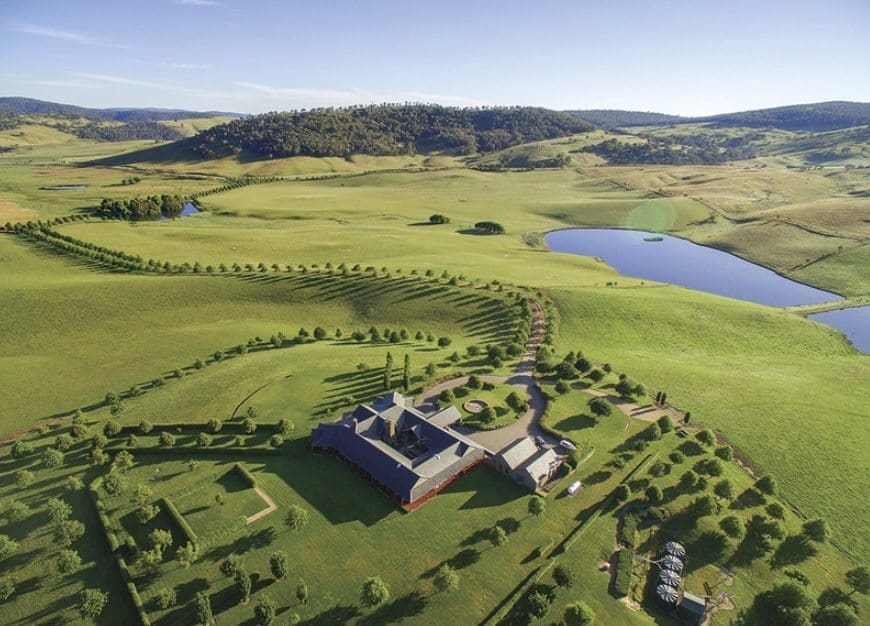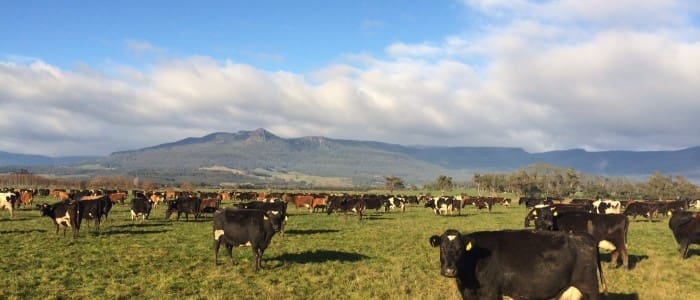
One of Victoria’s trophy properties currently listed is premium cattle breeding enterprise Cobungra Station, in Victoria’s East Gippsland. The large-scale, purebred and crossbred Wagyu beef breeding enterprise, numbering more than 4000 cows plus replacements, covers 650ha freehold and 24,500ha leased grazing land west of Omeo.
FAMILY succession and generational change appear to be main reasons why producers in southern and southeastern regions of Australia are currently selling their blue ribbon agricultural assets.
Agents who spoke to Beef Central report most vendors are capitalising on the present outstanding land prices to consolidate their assets, downsize or retire due to a lack of inter-generational transfer.
Phil Keen, Elders Rural Real Estate Manager for South Australia, said commodity prices, still well above five year averages – had been a driver.
“Many producers have been sitting on the fence thinking about selling. Strong commodity prices over the last three years have increased industry confidence and provided them with the confidence to make decisions for the future.”
Demand
Mr Keen said five years ago, corporates, big Australian-managed companies or large family organisations were the main buyers of agricultural assets in his region.
“Today, most of the appetite is from young people who want to return to farming. There’s more capacity for them to purchase properties because South Australia doesn’t have the scale of properties seen in Queensland, the Northern Territory and the Top End of Western Australia.”
Mr Keen said older listings in South Australia had been cleaned-out, and agents were on the hunt for new properties, with interest outstripping demand.
In SA, Elders has a handful of large-scale agricultural assets currently on the market including:
- 7821ha Cygnet Park Farms Porfolio, Kangaroo Island – currently negotiating with interested parties
- 22,513ha Nonowie, 20km south-west of Whyalla – sold to an undisclosed buyer for around $2.75m
- 1002sq km Mt Freeling Station, in the Upper Flinders Range – currently under contract
In Victoria, Elders has listed:
- 6488ha Cobungra Station, Omeo – expected to sell for $35m plus stock
- 714ha Glengarry, Darraweit Guim, 43km from Melbourne CBD
Recent sold properties include:
- 2206ha Bundoran & Kolanga, Dunkeld – reportedly achieved market expectations of $15m bare
- 1566ha Kulaba, Seymour – reportedly sold more than $6m bare
- 1252ha Nardoo and Burrabadeen, South Gippsland – reportedly sold to a private investor for $20m (including livestock)
- 1994ha Tarramia, Mulwala (Southern NSW) – reportedly exceeded market expectations of $10m bare

Nick Myer
Nick Myer from Elders Regional Victoria said properties in his region were attracting a combination of local, national and international interest.
“Some of the properties are notable agricultural holdings. They definitely have appeal and with that comes widespread interest from a number of investor classes, from local to corporate.”
CBRE has a number of grazing properties listed for sale in Victoria including:
- 360ha Buneep Park, 76km Melbourne
- 842ha Murraba, Maloneys and Glenholme, Willatook
- 1583ha Cairn Curran, Baringhup
- 6488ha Cobungra Station, Omeo
- 742ha Chintin Grange – 46km Melbourne CBD
- 714ha Glengarry, Darraweit Guim, 43km Melbourne CBD
Recently, 1400ha Fairfield, Darraweit Guim, 48km Melbourne CBD, was sold to a local investor for an undisclosed sum.
Melbourne-based CBRE agent Duncan McCulloch said there was strength in the domestic market.
“Depending on the scale and the nature of the offering, locals are back – from family farming operations to family corporates. There is still enquiry from off-shore as well – United States and Canadian pension funds are very strong,” he said.
This is evidenced by the recent purchase of the Sustainable Agriculture Fund’s 1145ha Cradle Coast Aggregation in Tasmania by New Zealand super group FarmRight – the investment platform for one of Canada’s largest pension investment managers, PSP Investments (Public Sector Pension Investment Board) for a reported $25m.

Sustainable Agriculture Fund recently sold its ’s 1145ha Cradle Coast Aggregation in Tasmania to New Zealand super group FarmRight – the investment platform for one of Canada’s largest pension investment managers, PSP Investments for a reported $25m.
Interestingly, several of the above mentioned properties are future land bank opportunities.
Chintin Grange, Glengarry, Fairfield and Buneep Park are located close to Melbourne’s CBD. There has been strong interest in all four properties from high-net worth individuals, farmers and land bankers looking to preserve capital and benefit from potential future land appreciation.
In fact, just two weeks ago, Deloraine, a 600ha cattle property, 42km north of Melbourne, sold for around $200m ($333,333/ha) to a Melbourne-based property developer. The site is likely to be home to the city’s newest suburb with the potential to accommodate 6000 residential blocks, plus schools and public parks.
One of the trophy properties listed by CBRE is premium cattle breeding enterprise Cobungra Station, in Victoria’s East Gippsland. The large-scale, purebred and crossbred Wagyu beef breeding enterprise, numbering more than 4000 cows plus replacements, covers 650ha freehold and 24,500ha leased grazing land west of Omeo.
Mr McCulloch reports high-net worth individuals and private families are looking beyond the property’s agricultural capabilities because it is adjacent to Mt Hotham airport and the Alpine ski fields.
Prices
Mr McCulloch said the market for large-scale agricultural assets has improved significantly.
“A sought-after location, secure rainfall and good infrastructure and soil types are always in high demand because it gives producers a surety in relation to forward operations. Given the higher rainfall, property prices in the Gippsland have traditionally traded at higher levels. Currently, properties in the Western District are achieving $7400/ha ($3000/ac), compared to $3700/ha ($1500/ac) a couple of years ago.”
Mr McCulloch said for those investors who had held enterprises in their family for a long time, and given their low historical costs, now was a good time to sell.
According to Nick Myer, prices are a moving target in terms of the expectations for assets and the value of assets.
“Limited stock is keeping property prices high on the back of strong protein prices. For the $10m plus market, there is a strong interest from buyers seeking unique and limited opportunities.
“The same can be said for the sub-$10m market, depending on what the assets are. At present, there’s an oversupply of dairy opportunities, but good quality grazing assets of scale are hard to come by.”
Mr Myer said there was a substantial number of off-market transactions taking place, in addition to those being publicly marketed.
“They range between asset classes. There are plenty of vendors capitalising on strong values. I believe it is consistent with other asset classes being sold in other states.”
His SA counterpart, Phil Keen said the trend towards off-market transactions had improved in his state.
“That probably goes against some people’s logic because why, with a hot buyer market, wouldn’t you go to the market? But motivated locals with money (plus the will and capacity) have their eyes on a property and don’t want to miss out.
“They come in and make a really good offer early. They don’t want to pay too much, but they want to secure the property, so they create a sense of urgency and make an offer prior to, or in the early stages of, the marketing campaign.”
Mr Keen said very few people offered a premium, straight off-the-bat.
“They usually offer full market value up front and don’t muck around. Selling and marketing can be a very stressful time for vendors, so they are often happy to take the money.”
He said while it might currently be a strong property market with stable interest rates, many buyers were still reserved, because banks are more cautious.
“Banks want to know if borrowers have the ability and cash flow to pay off the asset they want to buy. They don’t really care about equity, because equity can change. What they want to know is whether the borrowers have the cash and whether they generate the income from that property to pay for it.”
The agents spoken to in both states claim they are currently working on several large listings that are yet to come to the market.
